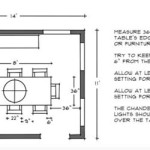Concrete Patio Extension with Pavers: A Comprehensive Guide
Extending a concrete patio with pavers presents a practical and aesthetically pleasing solution for homeowners seeking to expand their outdoor living space. This project offers a balance of durability, design flexibility, and potentially lower installation costs compared to solely concrete-based extensions. Integrating pavers with an existing concrete patio requires meticulous planning, proper site preparation, and skilled execution to ensure a seamless and long-lasting addition. This article explores the key considerations, methods, and best practices involved in extending a concrete patio with pavers.
Key Considerations Before Starting the Project
Before embarking on a concrete patio extension with pavers, several preliminary factors require careful evaluation. These encompass regulatory compliance, design considerations, site assessment, and budget planning. Addressing these aspects upfront will contribute to a smoother project execution and minimize potential complications.
Local Regulations and Permits: The initial step involves researching local building codes and regulations pertaining to patio extensions. Many municipalities require permits for structures exceeding a certain size or altering drainage patterns. Failure to obtain the necessary permits can result in fines, project delays, or even mandatory removal of the extension. Consult with the local building department to understand the specific requirements and obtain the appropriate permits before commencing any work.
Design and Layout: The design phase involves determining the desired size, shape, and layout of the paver extension. Consider the intended use of the space, the existing patio's dimensions, and the overall aesthetic of the property. A well-defined design provides a clear roadmap for the project and facilitates accurate material estimation. Factors like furniture placement, walkway integration, and accessibility should influence the design choices. Digital design tools or professional landscape architects can assist in visualizing the final outcome.
Site Assessment and Preparation: A thorough site assessment is crucial for identifying potential challenges and ensuring proper drainage. Evaluate the existing grade, soil composition, and proximity to utilities. The soil should be stable and well-draining to prevent settling or shifting of the pavers over time. If the soil is unsuitable, it may require amendment or replacement. Identify any underground utilities, such as gas lines or electrical cables, and contact the utility companies to mark their locations. Proper site preparation, including excavation, compaction, and grading, is essential for creating a stable base for the paver extension.
Budget Planning: Developing a detailed budget is paramount to avoid cost overruns and ensure project feasibility. The budget should encompass all aspects of the project, including materials (pavers, base materials, edging), equipment rental, labor costs (if hiring contractors), permit fees, and contingency funds for unexpected expenses. Obtain multiple quotes from suppliers and contractors to compare prices and negotiate the best possible rates. Prioritize quality materials and skilled labor to ensure the longevity and structural integrity of the patio extension. Consider phasing the project if budget limitations exist, focusing on essential elements first and adding decorative features later.
Step-by-Step Guide to Extending a Concrete Patio with Pavers
The process of extending a concrete patio with pavers involves several distinct stages, each requiring careful attention to detail. These stages include site preparation, base installation, paver placement, edging installation, and joint filling.
Site Preparation: The initial step involves removing any vegetation, topsoil, and debris from the area designated for the paver extension. Excavate the soil to a depth that accommodates the base materials and the pavers themselves. The depth will vary depending on the paver thickness and the required base depth, but typically ranges from 6 to 12 inches. Ensure proper grading to facilitate drainage away from the existing concrete patio and the house. Compact the excavated area using a plate compactor to create a stable subgrade.
Base Installation: The base is a crucial component of the paver extension, providing support and preventing settling. A typical base consists of two layers: a sub-base of compacted gravel and a bedding layer of sand. The gravel layer should be approximately 4 to 8 inches thick, depending on the soil conditions and anticipated traffic. Spread the gravel evenly and compact it thoroughly using a plate compactor. The sand layer, typically 1 to 2 inches thick, provides a level surface for the pavers. Use a screed board to create a smooth and even sand bed. Avoid over-compacting the sand, as this can hinder drainage.
Paver Placement: Begin laying the pavers according to the chosen design pattern. Start from a straight edge, such as the existing concrete patio, and work outwards. Maintain consistent spacing between the pavers using spacers or by eye. Gently tap each paver into the sand bed using a rubber mallet to ensure proper seating. Periodically check the level of the pavers using a level and make adjustments as needed. Cut pavers to fit around edges and corners using a paver cutter or a circular saw with a diamond blade. Wear safety glasses and a dust mask when cutting pavers.
Edging Installation: Edging is essential for containing the pavers and preventing them from shifting over time. Various edging options are available, including plastic edging, metal edging, and concrete curbing. Install the edging along the perimeter of the paver extension, ensuring it is securely anchored in the ground. The edging should be flush with the top surface of the pavers. Backfill around the edging with soil or gravel to provide additional support.
Joint Filling: The final step involves filling the joints between the pavers with polymeric sand. Polymeric sand is a specialized sand that hardens when wetted, creating a durable and weed-resistant joint. Sweep the polymeric sand into the joints, ensuring they are completely filled. Use a broom to remove any excess sand from the paver surfaces. Lightly water the pavers using a fine spray to activate the polymeric sand. Allow the sand to dry completely according to the manufacturer's instructions.
Addressing Potential Challenges and Ensuring Longevity.
While extending a concrete patio with pavers can enhance outdoor living spaces, certain challenges may arise during the process. Proactive planning and appropriate techniques are vital for mitigating these issues and guaranteeing the extension's durability.
Drainage Issues: Inadequate drainage can lead to water accumulation, which can damage the paver base, promote weed growth, and create slippery surfaces. Ensure proper grading away from the house and the existing concrete patio to facilitate water runoff. Consider installing drainage solutions, such as French drains or catch basins, in areas prone to water accumulation. Use permeable pavers or leave wider joints between pavers to enhance water infiltration.
Settling and Shifting: Settling or shifting of the pavers can occur due to inadequate base preparation, unstable soil, or improper compaction. Ensure that the subgrade and base materials are thoroughly compacted before laying the pavers. Use high-quality base materials that are appropriate for the soil conditions. Install edging to prevent the pavers from shifting laterally. Regularly inspect the paver surface for signs of settling or shifting and make repairs as needed.
Weed Growth: Weeds can grow in the joints between the pavers, detracting from the aesthetic appeal and potentially damaging the paver base. Use polymeric sand to fill the joints, as it inhibits weed growth. Consider installing a weed barrier fabric beneath the base materials to further prevent weed intrusion. Regularly inspect the paver surface for weeds and remove them manually or with a weed killer.
Maintaining the Paver Patio: Regular maintenance is essential for preserving the appearance and integrity of the paver patio. Sweep the pavers regularly to remove dirt, leaves, and debris. Power wash the pavers periodically to remove stains and algae. Reapply polymeric sand to the joints as needed to maintain their integrity. Seal the pavers with a paver sealer to protect them from stains and UV damage. Repair any damaged or cracked pavers promptly to prevent further deterioration.
Extending a concrete patio with pavers offers a versatile and durable solution for expanding outdoor living spaces. By carefully considering the initial design, meticulously preparing the site, and diligently executing each construction phase, homeowners can create an aesthetically pleasing and functional patio extension that will provide years of enjoyment. Addressing potential challenges proactively and consistently maintaining the paver surface further ensures the long-term durability and value of the project.

Xenia Paver Patio Extension Stones Concrete

Diy Extending Concrete Patio With Pavers Paver Small Garden Seating Area

Patio Contractor Decorative Concrete Paver 918 Outdoor Tulsa Builder

Landscape Pavers Great Hardscape For Pool Decks Patios

Revealing A Creative Diy Patio Extension With Pavers Designed Decor

Diy Concrete Patio In 8 Easy Steps How To Pour A Cement Slab

Concrete Patio Expanded With Pavers Flagstones Http Slickdeals Designs Blocks

Patio Extension Ideas How To Extend A Concrete Network

Diy Paver Patio Backyard Project Old Salt Farm

See The Many Choices That A Paver Patio Offers For Outdoor Living








